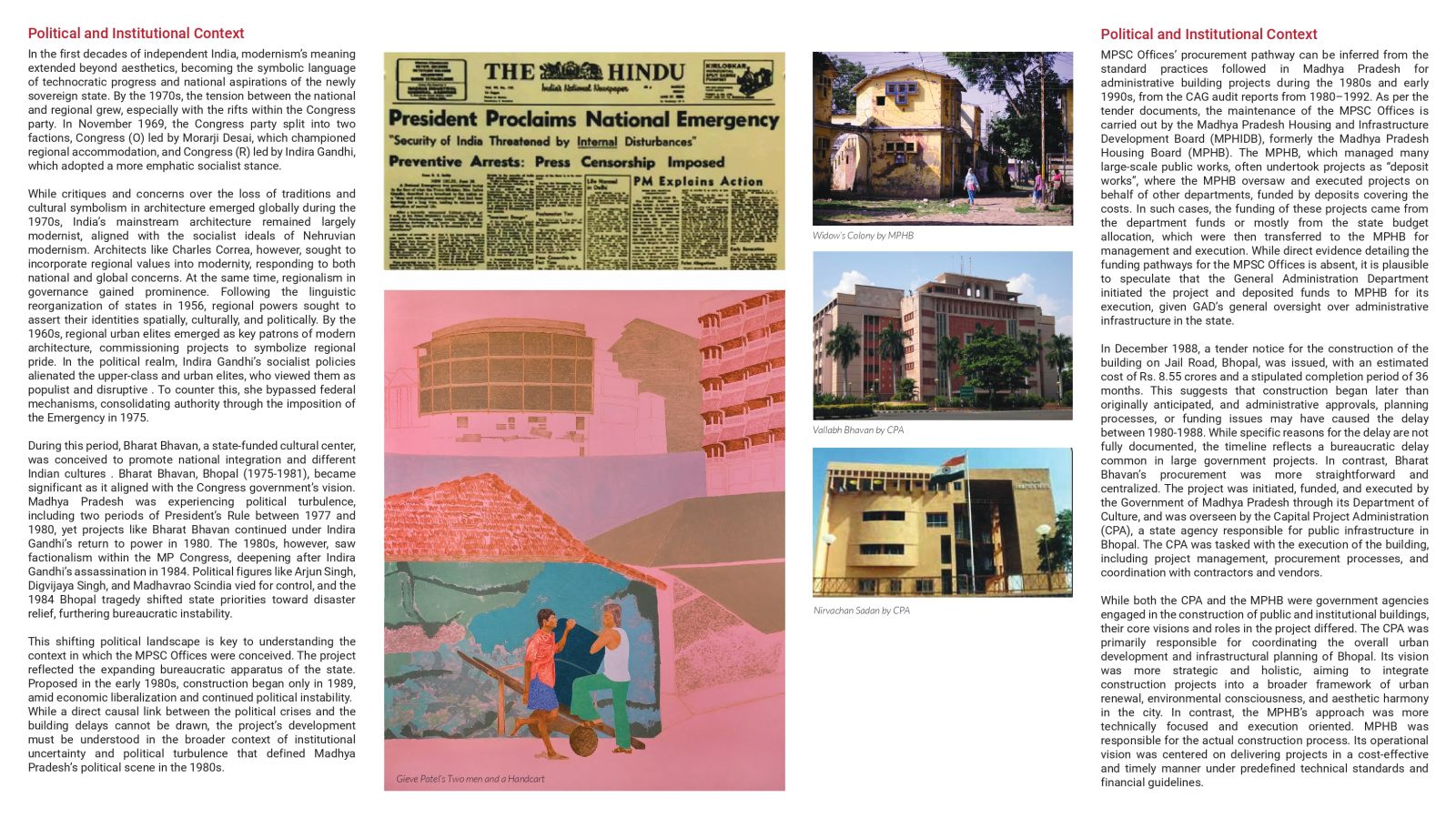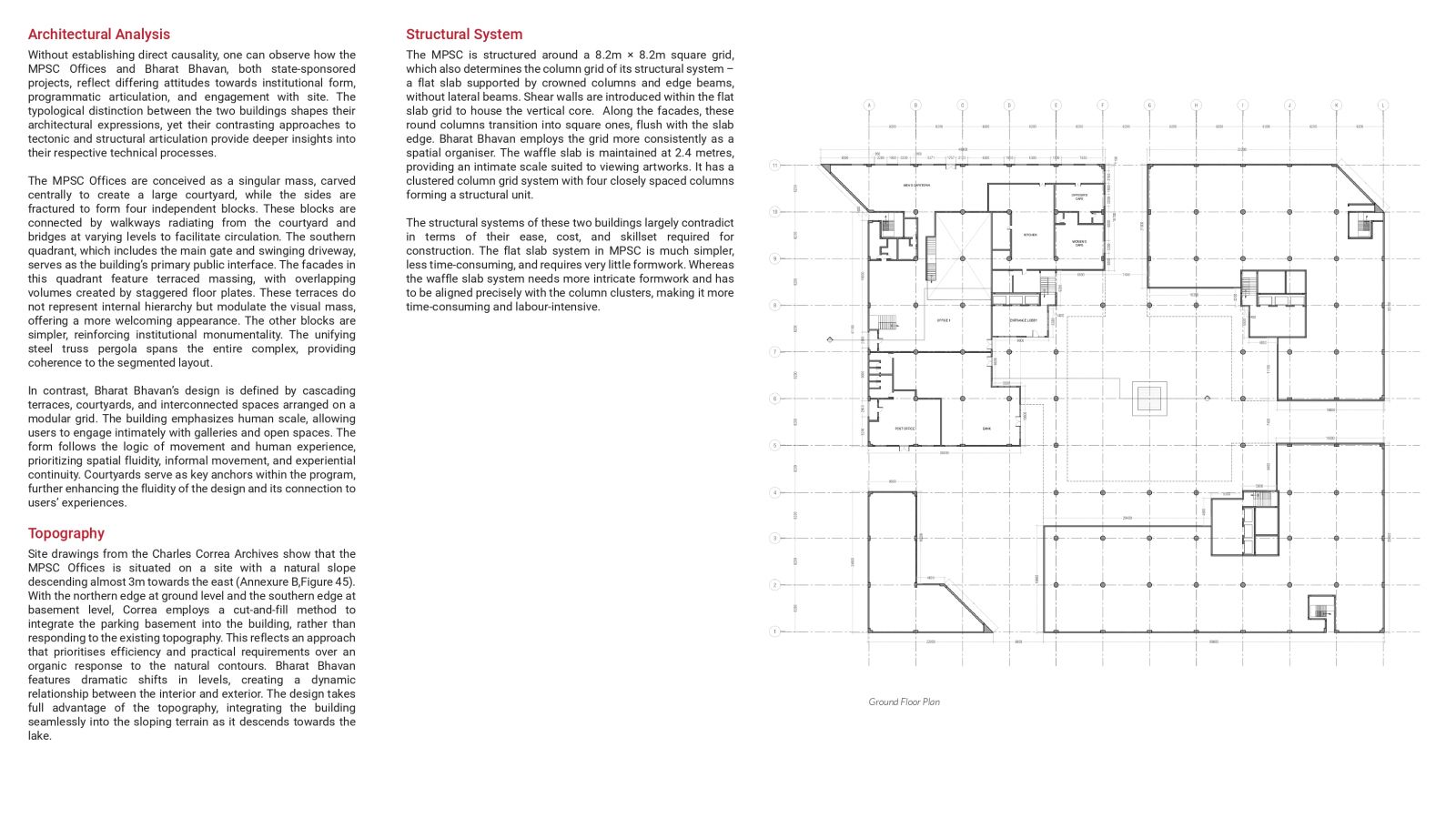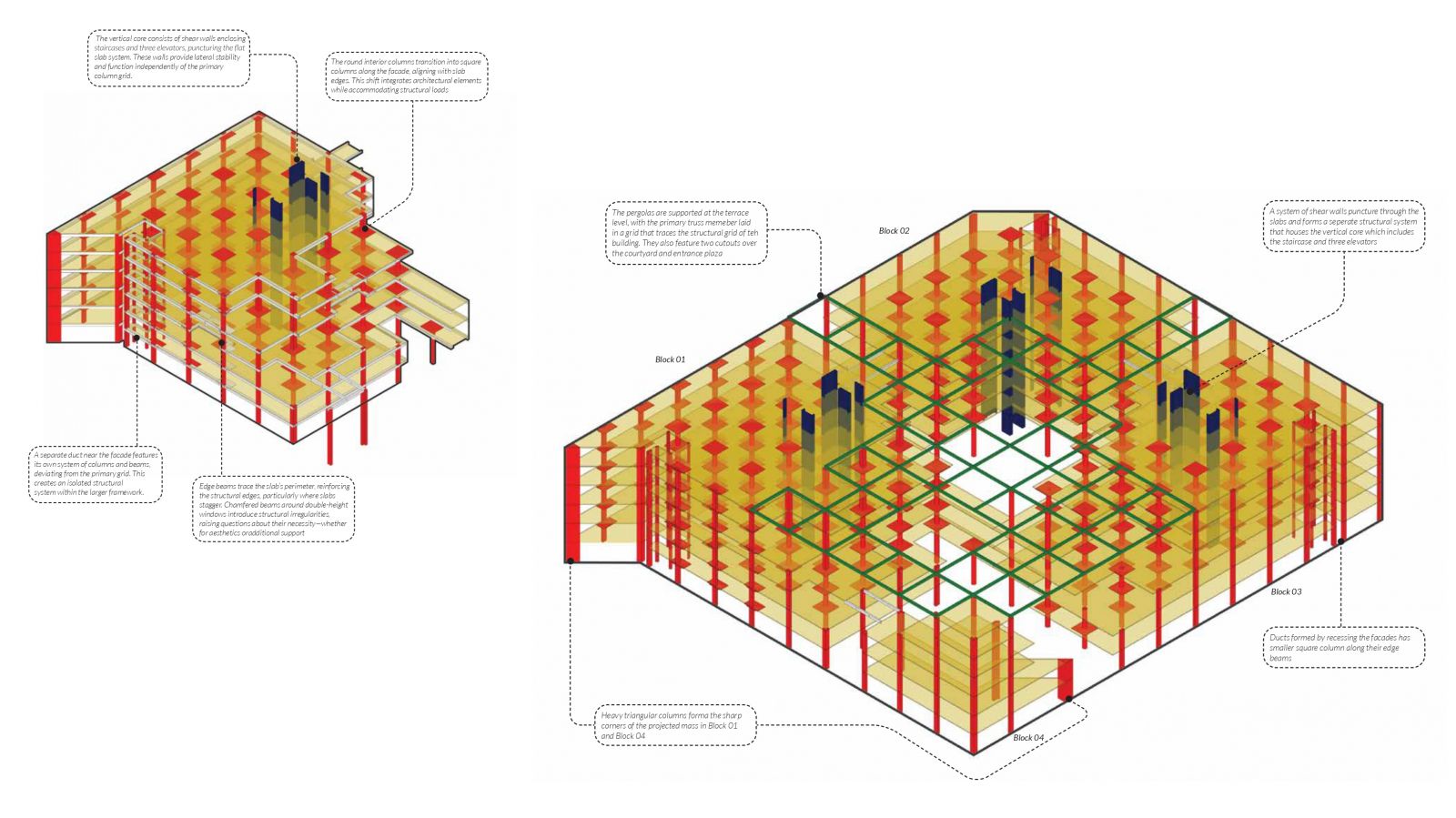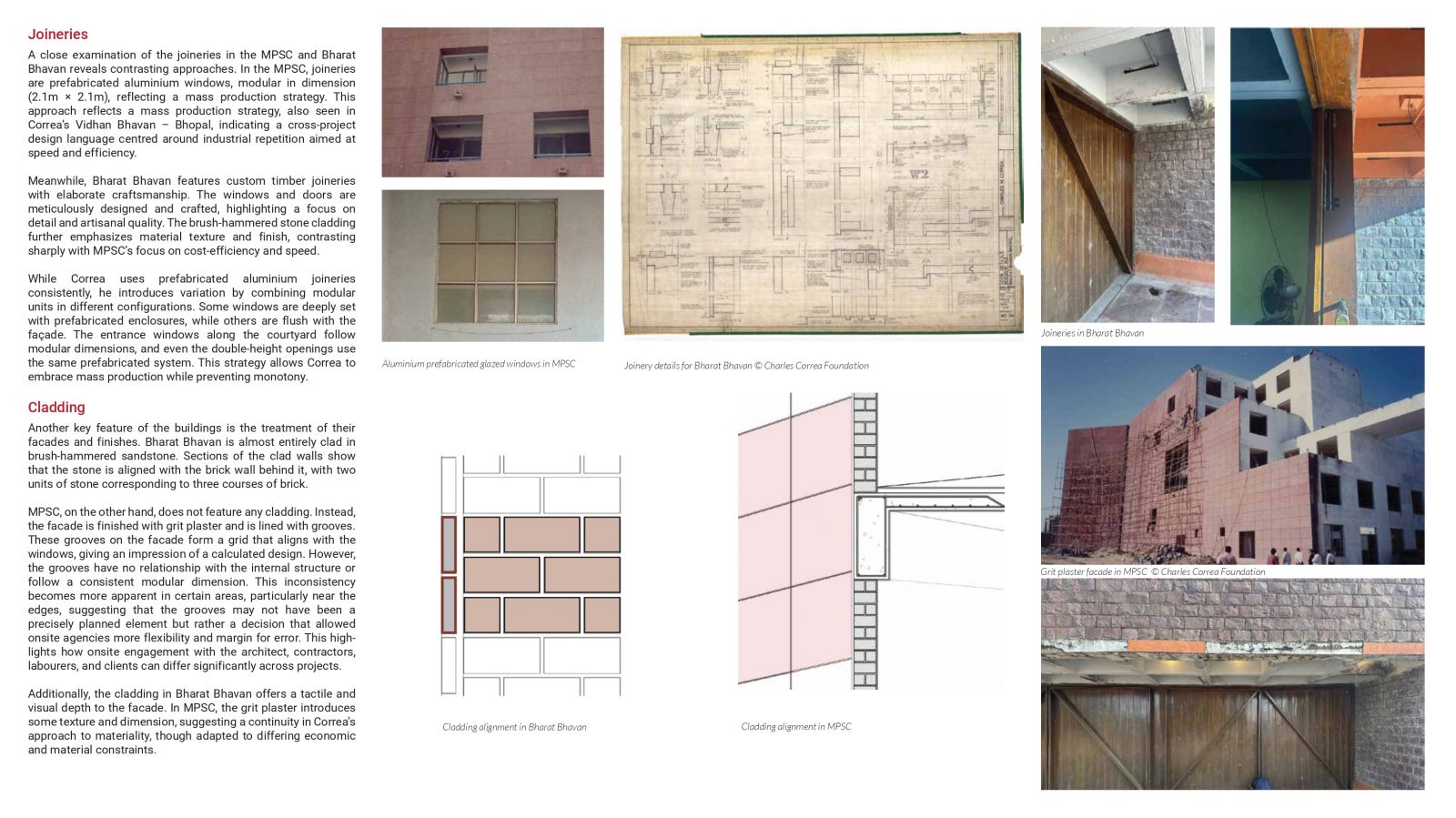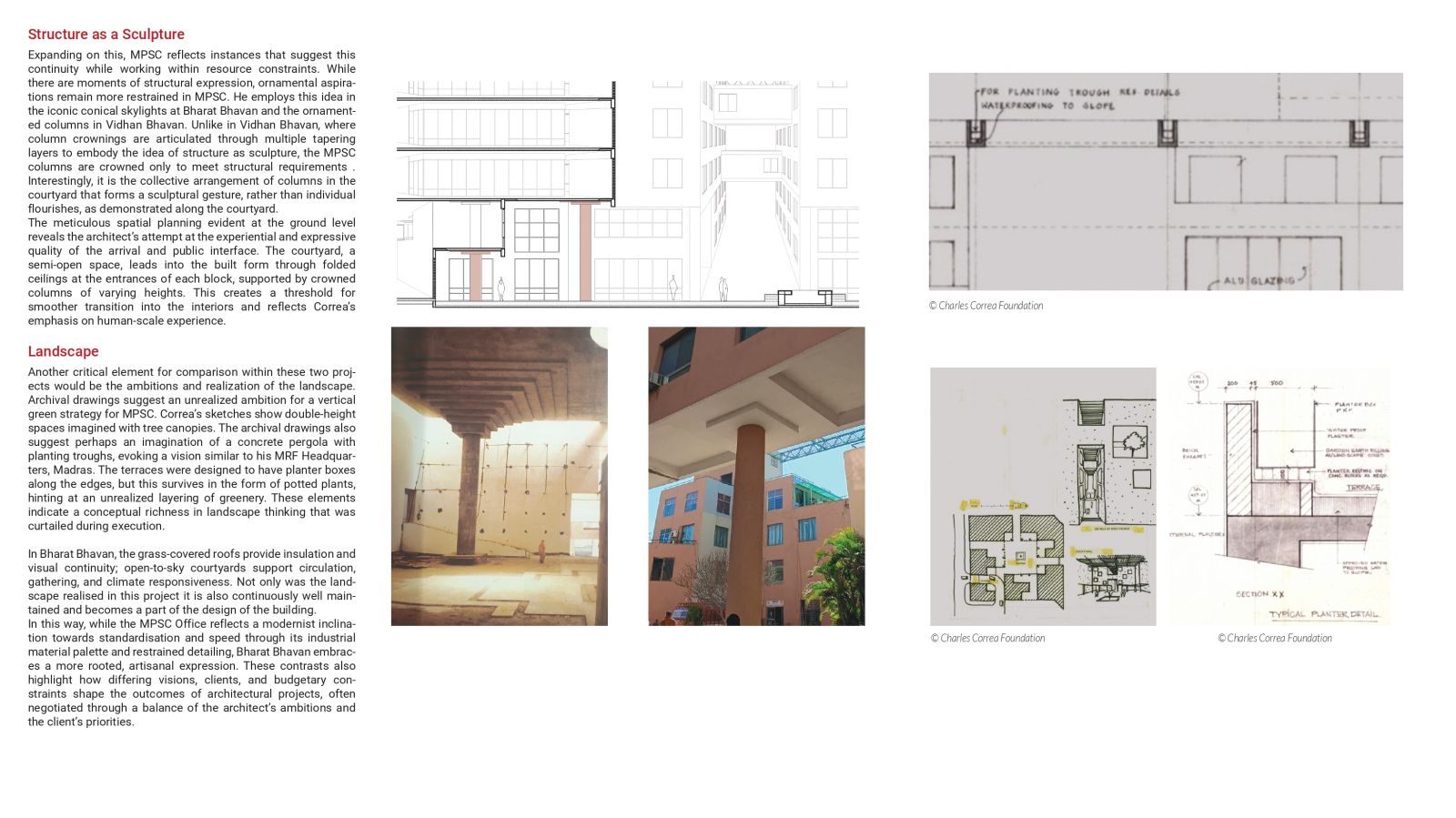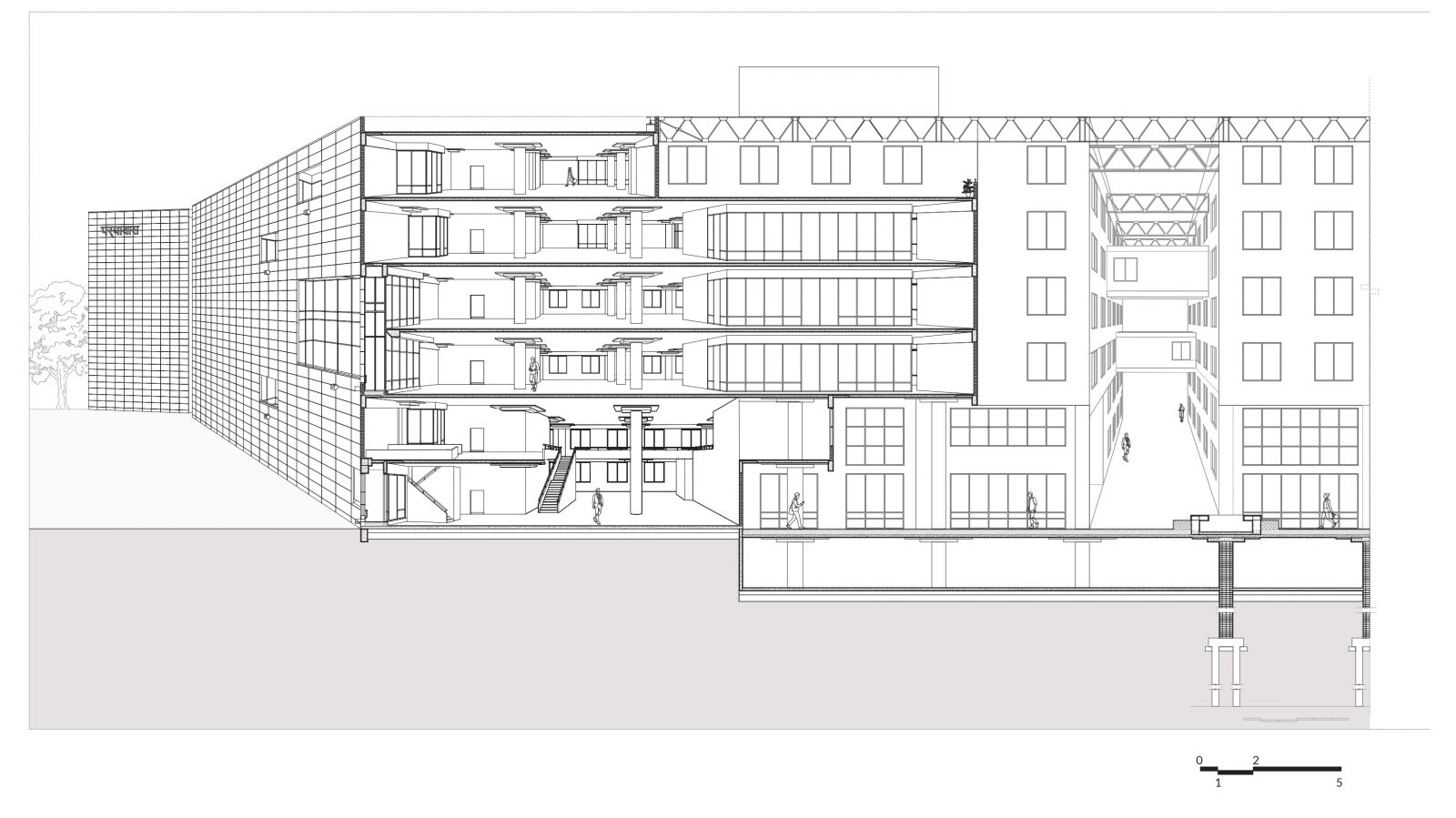Your browser is out-of-date!
For a richer surfing experience on our website, please update your browser. Update my browser now!
For a richer surfing experience on our website, please update your browser. Update my browser now!
In the decades following Independence, architecture in India became one of the many tools through which the state sought to articulate its identity, negotiate its power, and navigate its shifting political terrain. This essay investigates the interplay between state patronage, procurement systems, and architectural detail through a comparative study of two government-commissioned projects in Bhopal by Charles Correa: the MPSC Offices (Paryawas Bhavan) (1980–92) and Bharat Bhavan (1975–81). Built for different arms of the state and governed by distinct systems of funding, timelines, and procurement, these buildings offer insight into how architecture reflects and negotiates institutional priorities. By closely examining their spatial strategies and tectonic and structural expressions, the essay explores how architectural production mirrors the state’s vision and the requirements, hierarchies, and anxieties of bureaucracy.
View Additional Work
